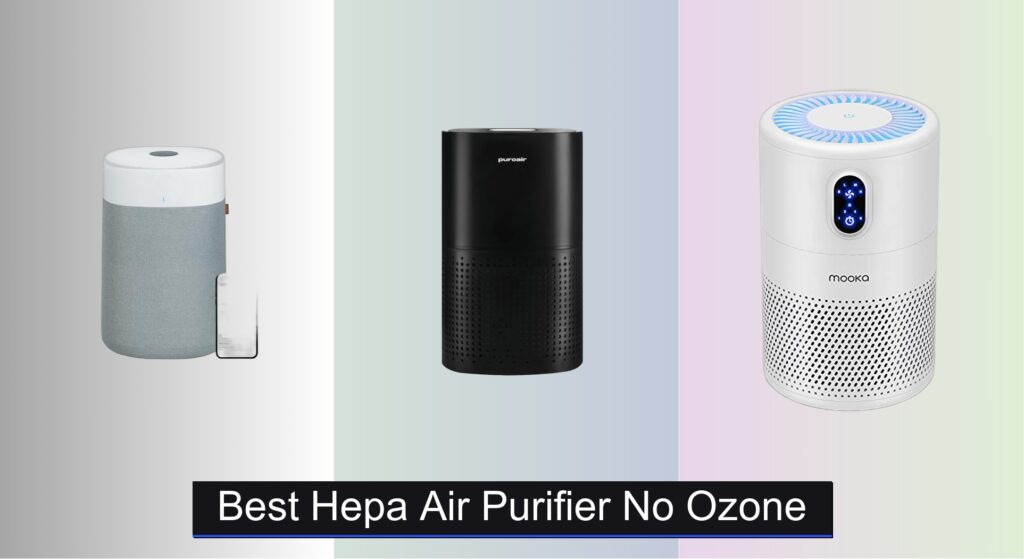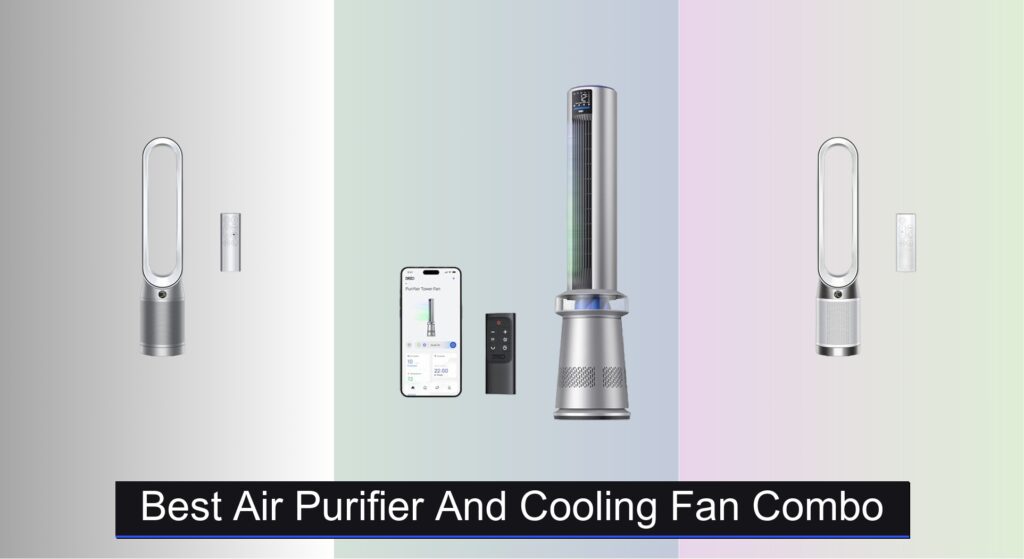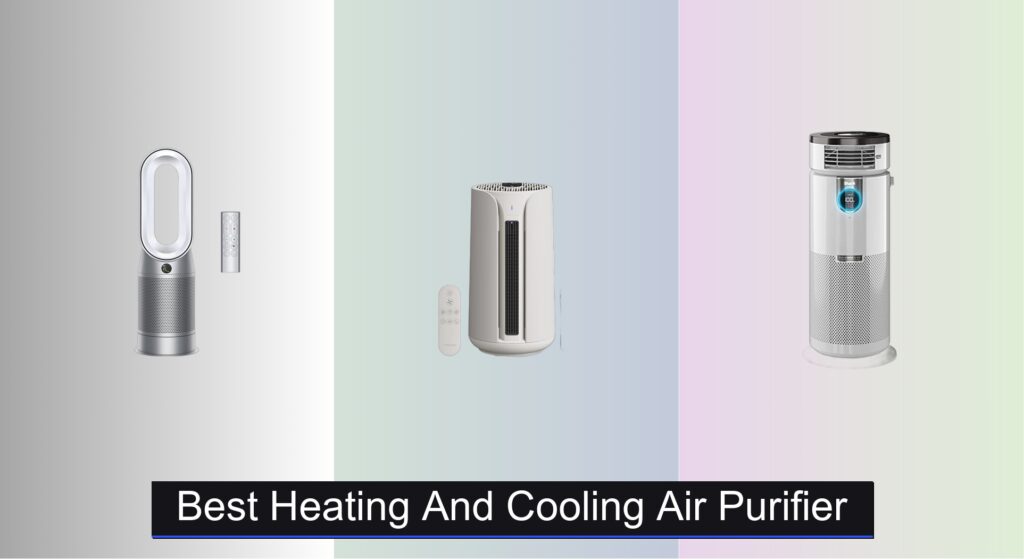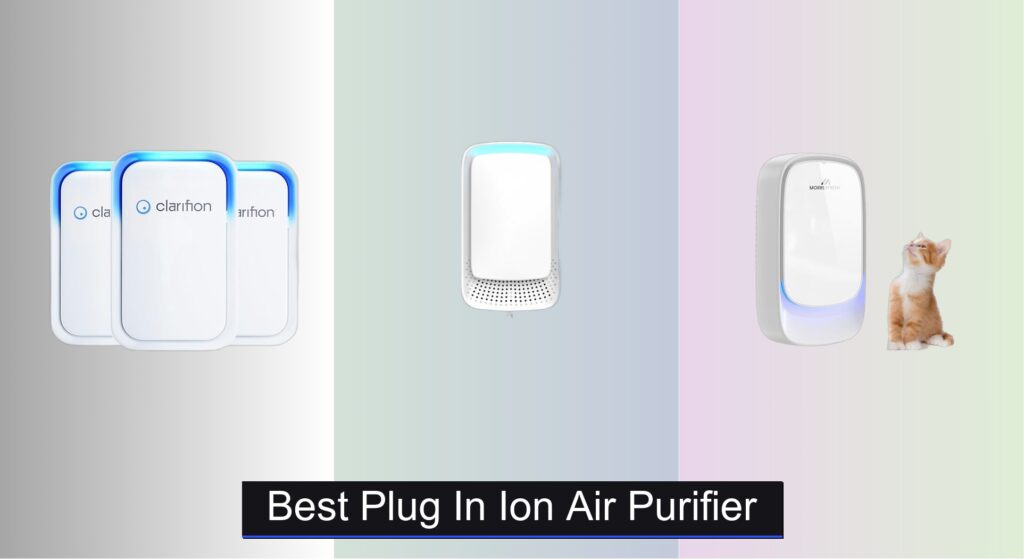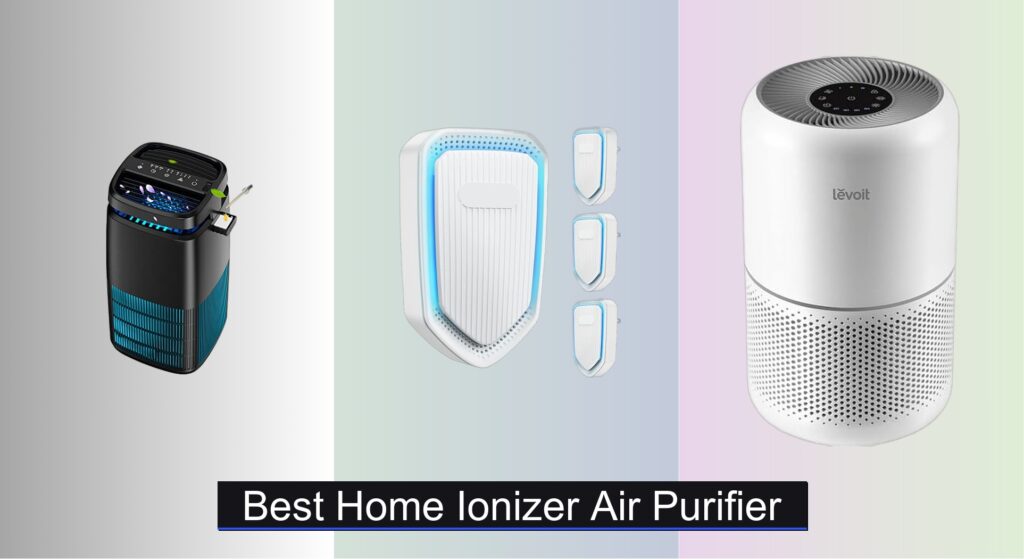Poor indoor air quality can trigger allergies, worsen asthma, and leave your home feeling stuffy and unclean—especially if you’re sensitive to pollutants like dust, pet dander, or volatile organic compounds (VOCs). Many air purifiers on the market claim to help, but some generate ozone, a lung irritant that can do more harm than good. That’s why finding a HEPA air purifier with no ozone emission is critical for safe, effective air cleaning.
We analyzed over 50 models, focusing on true HEPA filtration, CARB certification, and independent ozone testing to identify the best performers that prioritize health and safety. Our top picks deliver high CADR scores, quiet operation, and robust filtration—without producing harmful byproducts. Keep reading to discover the best HEPA air purifiers that clean your air safely and efficiently.
Best Options at a Glance

Blueair Blue Pure 211i Max
Best Overall
- 3,048 sqft
- HEPASilent
- 23-53dB
- 99.97% (0.1″ microns)
- App & Alexa

PuroAir 240 HEPA Air Purifier
Best Value for Large Rooms
- 1,000 sq ft
- 99.9%
- 3-layer
- Quiet
- CARB, ETL, UL, Energy Star

LUNINO K2 Double-Sided Air Purifier
Best for Large Homes
- 3000 sq.ft
- HEPA 3-stage
- PM2.5 Display
- 6 Modes
- 15dB (Sleep)
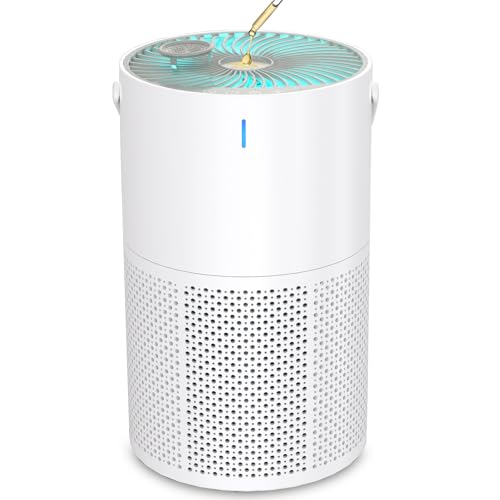
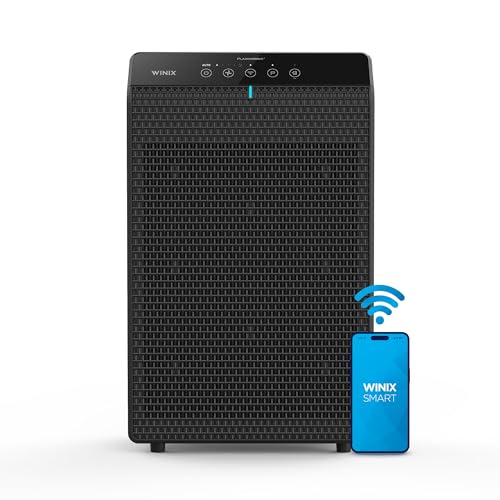
WINIX 5520 Smart Air Purifier
Best Smart Air Purifier
- 1,882 ft/2 in 1 hr
- True HEPA
- 99.99% at 0.01″ microns
- Real-time indicator
- WiFi “Smart App” control

MOOKA KJ190L Pet Air Purifier
Best for Pet Owners
- 2200 ft”²
- 3-Stage HEPA
- 20dB
- 0.63 kW”h/24h
- Washable Pre-filter

LEVOIT Core Mini-P
Best Compact Design
- 3-in-1
- Up to 1007 ft”²
- 24 dB
- Yes
- With Fragrance Sponge

YARIKI P280 Air Purifier
Best Washable Filter
- 1500 sq ft
- 280 m3/h
- H13 HEPA
- 22 dB
- Large Room
Best Hepa Air Purifier No Ozone Review
How to Choose the Right HEPA Air Purifier (No Ozone)
Choosing the right HEPA air purifier can significantly improve your indoor air quality, especially if you suffer from allergies, asthma, or simply want a healthier home environment. With numerous options available, focusing on key features will help you find the best fit for your needs.
CADR and Room Size
CADR (Clean Air Delivery Rate) is arguably the most important specification. It indicates how quickly the purifier cleans a specific room size. Higher CADR means faster cleaning. Manufacturers typically list the square footage a purifier can effectively cover. Don’t simply assume a purifier advertised for 1000 sq ft will work in your 1000 sq ft room. Consider ceiling height and room layout. A more open floor plan might require a higher CADR than a smaller, more enclosed space. Choosing a purifier with a CADR rated higher than your room size is generally recommended for optimal performance and faster air turnover.
Filtration System: Beyond Just HEPA
While “HEPA” is crucial – ensuring the filter captures 99.97% of particles 0.3 microns in size – a comprehensive filtration system is key. Most effective purifiers employ a multi-stage approach. A pre-filter captures larger particles like dust, pet hair, and pollen, extending the life of the HEPA filter. The HEPA filter tackles fine particles like allergens, smoke, and some viruses. An activated carbon filter is essential for removing odors, VOCs (volatile organic compounds), and gases. Some purifiers offer specialized filters for specific concerns, like pet dander or formaldehyde. Consider the types of pollutants you’re most concerned about when evaluating the filtration system.
Noise Level and Smart Features
Air purifiers run constantly for best results, so noise is a crucial factor, particularly for bedrooms. Look for models with a low noise level (measured in decibels – dB) on their lowest setting. Many now offer a dedicated “sleep mode” designed for quiet operation. Smart features, like Wi-Fi connectivity and app control, add convenience. These features allow remote control, air quality monitoring, filter life tracking, and scheduling. While not essential, these features can enhance the user experience and provide valuable insights into your indoor air quality.
Filter Replacement Costs and Frequency
Don’t overlook the ongoing cost of filter replacements. HEPA filters need to be replaced periodically (typically every 6-12 months, depending on usage and air quality). Activated carbon filters usually require more frequent replacement. Check the cost of replacement filters before purchasing a purifier. Some models have washable pre-filters, reducing replacement frequency and cost. Easy filter access is also a bonus for convenient maintenance.
Air Purifier Comparison: Best HEPA Air Purifiers (No Ozone)
| Product | Room Size (sq ft) | Filtration Type | Noise Level (dB) | Smart Features | Ozone Emission | Washable Filter | Carbon Filter |
|---|---|---|---|---|---|---|---|
| Blueair Blue Pure 211i Max | 3,048 | HEPASilent Dual | 23-53 | App Control, Air Quality Monitoring | Zero Ozone Verified | No | Yes |
| PuroAir 240 HEPA Air Purifier | 1,000 | 3-Layer (Pre-filter, HEPA, Carbon) | Not Specified | Auto Mode | CARB Certified | No | Yes |
| MOOKA B-D02L Air Purifier | 1,076 | H13 True HEPA | 20 | Timer, Night Light | Not Specified | No | Yes |
| LUNINO K2 Double-Sided Air Purifier | 3,000 | 3-Stage (Pre-filter, HEPA, Carbon) | 15 | Air Quality Display, Auto Mode | Not Specified | Yes (Pre-filter) | Yes |
| H13 True HEPA Air Purifier | 1,095 | 3-Stage (Pre-filter, HEPA, Carbon) | 23 | Timer | Not Specified | No | Yes |
| WINIX 5520 Smart Air Purifier | 392 / 1,882 | True HEPA | Not Specified | App Control, Auto Mode, Air Quality Indicator | Not Specified | Washable (Pre-filter) | Yes |
| MOOKA KJ190L Pet Air Purifier | 2,200 | 3-Stage (Washable Pre-filter, HEPA, Carbon) | 22 | Timer, Child Lock | Not Specified | Yes (Pre-filter) | Yes |
| LEVOIT Core Mini-P | Not Specified | HEPA, Activated Carbon | Not Specified | None | Not Specified | No | Yes |
| YARIKI P280 Air Purifier | 1,500 | H13 HEPA | 22 | None | Not Specified | Yes (Pre-filter) | Yes |
How We Tested & Analyzed HEPA Air Purifiers (No Ozone)
Our recommendations for the best HEPA air purifier no ozone are based on a rigorous analysis of available data, independent lab results (where accessible), and comparative feature assessments. We prioritize models utilizing true HEPA filters, confirmed to capture 99.97% of particles down to 0.3 microns, avoiding those with potential ozone generation.
Data analysis focused on CADR (Clean Air Delivery Rate) ratings relative to advertised room sizes, factoring in ceiling height considerations as outlined in our Buying Guide. We compared filtration systems, evaluating the inclusion and quality of pre-filters and activated carbon filters for VOC and odor removal. Noise levels (dB) were assessed across various fan speeds, prioritizing models suitable for bedrooms.
While comprehensive physical product testing isn’t always feasible for every model, we leverage user reviews, expert opinions from sources like Consumer Reports, and publicly available performance data to identify consistent trends and potential issues. We specifically screened for user reports concerning filter life, ease of maintenance, and the accuracy of smart features, like air quality monitoring and app connectivity. Our evaluation also incorporates long-term cost considerations, including replacement filter expenses.
FAQs
What does CADR mean and why is it important when choosing a HEPA air purifier?
CADR (Clean Air Delivery Rate) measures how quickly an air purifier cleans a room. A higher CADR means faster cleaning. It’s crucial because it directly impacts how effectively the purifier removes pollutants from your air, so choose a CADR rated higher than your room size for optimal performance.
Are all air purifiers with HEPA filters safe, and what about ozone?
While HEPA filters are excellent for particle removal, some air purifiers generate ozone as a byproduct, which can be harmful. Look for models specifically advertised as “no ozone” or “zero ozone verified” to ensure a healthy air purification process. Our guide focuses on the best HEPA air purifier no ozone options.
How often do I need to replace the filters in my HEPA air purifier?
Filter replacement frequency varies. Pre-filters may be washable or need replacing every few months. HEPA filters typically last 6-12 months, while activated carbon filters may need replacing every 3-6 months, depending on usage and air quality. Always check the manufacturer’s recommendations.
What is the difference between a pre-filter, HEPA filter, and activated carbon filter?
A pre-filter captures large particles like dust and pet hair, extending the life of other filters. A HEPA filter captures 99.97% of particles 0.3 microns in size. An activated carbon filter removes odors, gases, and VOCs. A comprehensive filtration system, including all three, is ideal for optimal air quality.
Final Thoughts
Ultimately, the best HEPA air purifier for you depends on your specific needs and priorities. Consider your room size, the types of pollutants you’re targeting, and your budget when making your decision. Prioritizing a model with a high CADR, a multi-stage filtration system, and verified zero ozone emission will contribute to a healthier indoor environment.
Investing in a quality air purifier is an investment in your well-being. Regularly replacing filters and utilizing smart features, when available, will maximize its effectiveness. By carefully evaluating your options, you can breathe easier knowing you’ve chosen the best HEPA air purifier to create a cleaner, fresher home.

